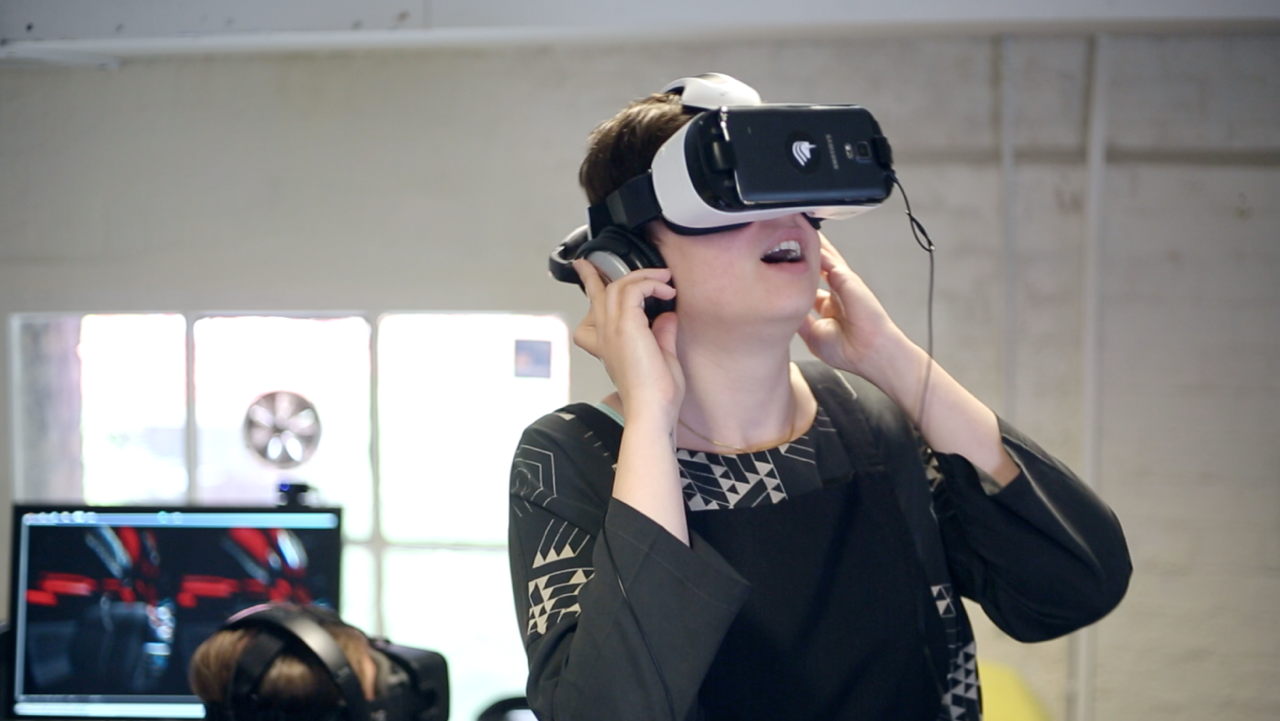
A Project Daedalus lab in London
Photo: Mind the Film
Creating a virtual new world
Anna Frew has spent a year exploring the potential uses for drone technology in the arts. She tells us what she has discovered.
Over the past year I have been working on Project Daedalus (PD) exploring the creative potential of drone technology in the arts and cultural sector. It is one of over 50 projects funded by the Digital R&D for the Arts initiative, which invited arts, research and tech partners to collaborate and explore different business models to expand audience experiences. PD was led on the research framework by Abandon Normal Devices (AND), known for developing digital art alongside the University of Salford, and by Marshmallow Laser Feast, which supplied the technical expertise.
Drones gave the workshop participants the chance to see the world in a way not offered to them every day
The project was conceived amid rapid developments in drone technology and the rise of affordable consumer products (starter drone kits range from £60 to £600). As drones became ever more present within wider society, their application within the arts sector became greater. There was a clear opportunity in exploring the possibilities of drone technology in a creative context, connecting to new modes of cinematic, performance and live interactive experiences. Early in the research we observed that the technology already had a wide range of applications within the arts, from performers to flying cameras. Cirque du Soleil uses drone technology as interactive props, creating flying lampshades as part of a magical performance, where they danced in sync with the lead actor. It became clear that a potential avenue for development was in combining drones with virtual and augmented reality to take audiences to places they could never access in the real world. This had practical benefits for arts organisations because it could be applied relatively cheaply.
Our research has culminated in an evolving online toolkit that brings together the learning and top tips to avoid the pitfalls of creating your own drone-related project. Aimed at a wide range of users, the resource includes a beginner’s guides to drone technology, legal and creative considerations for producers, all the way to the code to help you track and control your own drone.
Key to creating a useful resource for arts organisations was including a wide range of voices involved in the research. We did this by working with a varied group of arts organisations and practitioners, alongside audiences which weren’t currently targeted by drone marketing. We identified two key groups – teenage girls and adults with learning difficulties – to challenge our preconceptions of the technology. The teenage girls in Salford were taught how to use nano drones to shoot short films and were asked to think about the possible applications of drone technology. The session with adults with learning difficulties was run with Venture Arts in Manchester. The highly interactive drone flying session gave them the chance to take control of their own drone, as well as getting a new perspective viewing the footage of themselves from the on-board camera. Using this technology gave them a new sense of individuality, mobility and freedom by offering them access to new perspectives. We also ran a series of small labs in Manchester and London that brought together different practitioners and producers across artforms, introducing them to the tech and enabling them to get hands on through demos with drones and a virtual reality kit. We opened up discussion around the creative potential and logistical challenges, and what would be useful for them in productions. Following this we hosted a public showcase event at Somerset House last July, where people saw a range of drones first hand (from uses by hobbyists to aerial cinematography), had a go at flying, and experienced flight from the eyes of the drone via virtual reality headsets.
Drones have given all our workshop participants the chance to see the world in a way not offered to them every day. The applications for the technology in aiding accessibility are great. One theme that has emerged is the use of drones in arts or heritage sites to provide people with a way to explore locations virtually that might not be possible due to issues around access. The Bodie State Historic Park in California is documenting an abandoned Gold Rush town before it disintegrates due to long-term drought. The aim is to create an interactive fly-through for audiences to explore, as well as creating detailed surveys for conservation purposes.
Overall, our research has shown how drones offer the creative sector opportunities to entice harder-to-reach audiences, as well as testing the boundaries of other artforms.
Anna Frew is Creative Producer and Research Assistant of Abandon Normal Devices at the University of Salford.
www.andfestival.org.uk/projectdaedalus
Tw @al_frew
Join the Discussion
You must be logged in to post a comment.